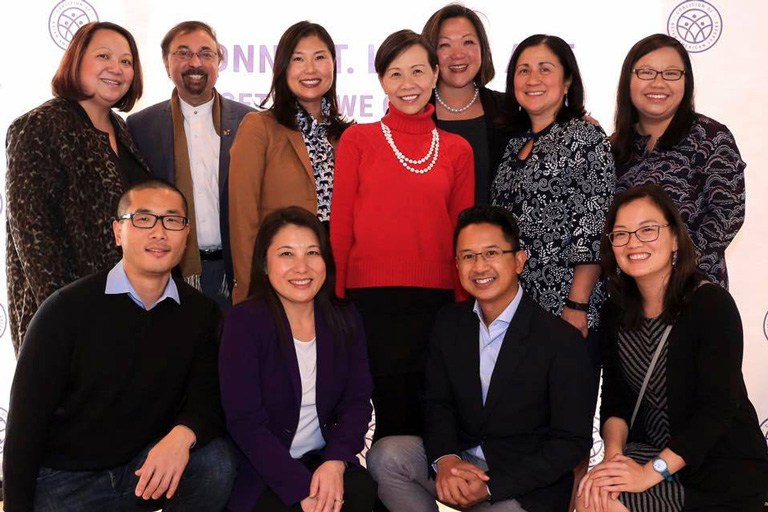Addressing the Minnesota Paradox

Photo: CAAL’s (Coalition of Asian American Leaders) Power of We Lunch
Infrastructure grants boost culturally led nonprofits
The Minnesota Paradox
Overall, Minnesota has an impressive quality of living. We have high rates of education, low unemployment and poverty, and good health. But, as we in the nonprofit sector are well aware, a racial/ethnic analysis reveals a startling disparity between white people and people of color, which has been referred to as the “Minnesota Paradox.” In Minnesota the achievement gap between white students and students of color is among the worst in the nation. Our employment level is among the highest in the nation, but for African Americans and Native Americans, that level drops significantly. The disparities are troubling.
“Small nonprofit organizations serving people of color face challenges extending beyond the purely financial.”
Kate Barr
Culturally led nonprofits working for change
Minnesota is home to 7,000 registered nonprofits with small nonprofits making up over 70% of the total. Minnesota’s nonprofit sector employs 11.5% of the state’s workforce. As “job creators” Minnesota’s nonprofits have shown more post-recession employment growth than either the private or public sectors. About 85% of the state’s nonprofits are engaged in types of community services that provide support for low-income individuals and families. Nonprofits of all types and sizes are essential partners to local and state agencies and to the business community. The state is home to many well-established and sizable nonprofits delivering high quality services. Smaller, community based nonprofits are equally important and valuable to reach all people around the state.
The number of nonprofits that are led by and serve people of color has been growing in Minnesota, reflecting changing demographics and value of diverse leadership in communities. In our experience, these organizations are uniquely responsive and relevant in their community and they flourish with support for infrastructure, adequate staffing, and operational systems.
We have provided support to many Twin Cities organizations, but also to rural organizations including Winona nonprofit Project FINE and its Executive Director Fatima Said, as they improve the well-being of immigrants. Her organization’s mission is to strengthen and enrich their community by helping to integrate ethnically diverse people. They do this by building cultural sensitivity in Winona and assisting immigrants and refugees with adjusting to life in Winona, connecting clients to services including schools, healthcare, and housing. Their capacity to serve the community is stronger because of the training and guidance they received. Many other organizations like Project FINE have savvy, committed leaders and boards who benefit from support and investment.
Boosting capacity through infrastructure grants
Small nonprofit organizations serving people of color face challenges extending beyond the purely financial. Funding can be difficult to come by, and these organizations also benefit from funds to invest in infrastructure and systems, and with staff to serve the community. In the spring of 2017, we advocated along with the Coalition of Asian American Leaders (CAAL) for the State of Minnesota to approve bill HF2167/ SF2000 to expand the capacity of Minnesota’s culturally led nonprofits.
“These organizations are uniquely responsive and relevant in their community and they flourish with support for infrastructure, adequate staffing, and operational systems.”
Kate Barr
State legislators approved the bill in May 2017. Propel Nonprofits and the Department of Employment and Economic Development were named co-administrators of the Nonprofit Infrastructure Grant Program. This pilot program allotted $900,000 for infrastructure grants to small, culturally led nonprofits that primarily support and work with historically underserved cultural communities.
Eligible activities could include infrastructure improvement (database, financial, and other administrative system improvements), workforce development (cultural competencies for staff or hiring new staff or consultants), and creating new partnerships. All grant recipients will receive technical assistance from Propel Nonprofits focused on sustainable infrastructure development, such as the development of internal systems to help make organizations competitive for larger state or philanthropic grants.
While this is a pilot program and I expect we will learn some lessons along the way, I have already seen the results of investing in culturally specific organizations – they are powerful contributors to the state’s economic vitality, in addressing disparities, and strengthening community health. We look forward to seeing what growth and new partnerships emerge from the Nonprofit Infrastructure Grant Program.
More information and a full list of awardees can be found here.

